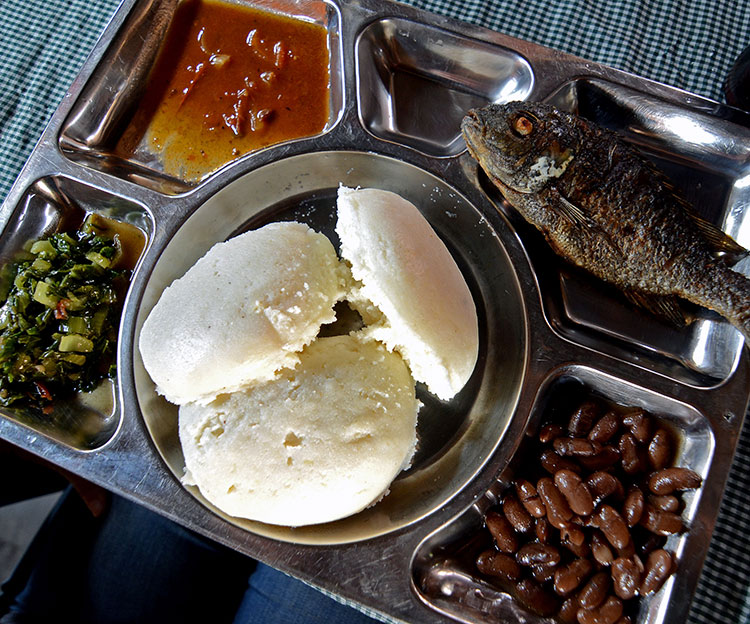Marketing and the Meaning of “Food”
A recent essay in the food magazine Lucky Peach points to one of the reasons that food marketing can be uniquely challenging: the hurdle of our deep-seated human tendency to give the word “food” a very specific definition, which we then endow with incredible emotional meaning. That’s a little abstract, so if you’ll excuse me a somewhat long quotation, this passage is illustrative:
In a 1939 monograph about a Bemba-speaking people in southern Africa, Audrey Richards described a food called ubwali. This was a sticky millet porridge that could be rolled into balls and dipped in something called umunani, a term Richards translates as “relish.” Umunani referred in a general way to stews made from meat, vegetables, caterpillars, groundnuts, ants, fish, mushrooms, or whatever else came to hand. The people Richards studied were reluctant to eat ubwali without umunani, but only one kind of umunani was eaten with each meal; ubwali was the central element of their cuisine. And it wasn’t simply that the word ubwali could refer to food in a general sense, either, as “bread” does in English. Ubwali was in fact the only thing that qualified as food at all. People who had been eating roasted maize all day claimed to be starving because they hadn’t yet eaten ubwali. Umunani, which must have contributed tastes and textures we would recognize as the definitive markers of a regional cuisine, was not food. People told Richards that it simply made the ubwali easier to swallow.
So here is another way of thinking about food: Depending on whom you ask, food is bread, food is rice, food is ubwali. Food is the starch, and everything else, so to speak, is just gravy.

Aaron Thier, author of the piece, ties this concept of ubwali to his own dietary goals: He wants to base his diet on local foods, which as a Floridian means green bananas, but he still eats oatmeal or bread for breakfast every morning. Despite his strong political motivations to change his behavior, he says, “Oatmeal and bread are, to me, deep down, food.”
That feeling, that certain things are just food in a way that others aren’t, is one of our biggest challenges as food marketers, at least when we introduce a new product. Consumers don’t easily change their idea of what defines “food,” even when internally motivated to do so. And the reverse is also true: convincing people that something they’ve designated as “not food”—such as insects—takes some time and effort, to say the least. Marketers who want to make their product a real, deep-down, emotionally satisfying food for customers face a long, challenging project.
At the same time, that very emotionalism gives food some compelling market advantages. Once people are in the habit of eating something, and internalize that item as “food” in the sense that Thier means it, their loyalty is intense and their consumption is often high. Successful food marketing, then, aims to make an emotional connection on a level that other industries may never try to reach.
Making that connection, and making it stick, takes a full-circle approach to marketing, one that understands the emotional importance of food as well as market data. Our staff is full of the food fascinated, and we know how to deploy marketing that’s driven equally by data and emotion. Give us a call and let’s discuss how we can make your new product “food” for your customers.
